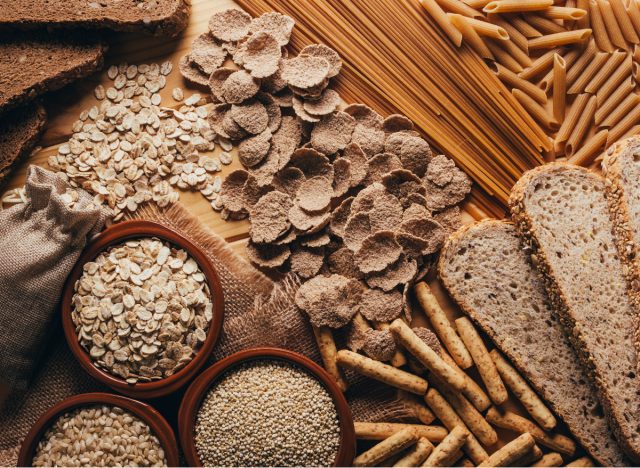Carb cycling is a diet plan that switches between days of high and low carbohydrate intake to boost metabolism, burn fat, and improve overall health. It’s popular among fitness enthusiasts and those wanting to lose stubborn belly fat by taking advantage of the body’s natural metabolic processes. By changing the number of carbs you eat, carb cycling provides the energy needed for tough workouts on high-carb days while promoting fat-burning and better insulin sensitivity on low-carb days.
In this article, we’ll explain exactly how carb cycling works, highlight its benefits for weight loss, and offer practical tips for adding it to your diet. We’ll also explore the science behind carb cycling’s effects on hormone levels, metabolism, and energy use, and show you how to customize a carb cycling plan to fit your personal needs and fitness goals.
Whether you’re an athlete seeking top performance, a fitness fan trying to overcome a weight-loss plateau, or just interested in new diet strategies, understanding carb cycling could help you reach your health and fitness goals.
How does carb cycling work?

Carb cycling involves eating more carbs on some days and fewer on others to boost metabolism, burn fat, and maintain muscle strength. On high-carb days, those excess carbs fill your muscles and liver with glycogen, which fuels workouts and keeps your metabolism active. Eating more carbs triggers insulin release, storing glycogen, building muscle, and firing your metabolism.
On low-carb days, the aim is to burn fat by making your body use stored fat for energy instead of carbs. Lower insulin levels help your body switch to burning fat, leading to fat loss over time. These low-carb days also improve insulin sensitivity, making your body use carbs more efficiently and reducing the chance of storing extra carbs as fat.
Can carb cycling help you lose weight and, in turn, belly fat?

Yes, it’s true! Carb cycling is an effective way to shed those extra pounds, including stubborn belly fat. By alternating between high-carb and low-carb days, you can keep your metabolism on its toes and encourage your body to burn fat for fuel. Plus, carb cycling can help prevent those pesky weight-loss plateaus, keeping you on track to reach your goals.
How to do carb cycling to speed up your weight-loss efforts:

Looking to dive into carb cycling for weight loss but not sure where to start? We have you covered with a step-by-step guide on how to do it right. Let’s break it down into simple, actionable steps to make carb cycling work for you.
1. Determine your Basal Metabolic Rate (BMR)
To calculate your daily caloric needs, you first need to determine your BMR, which is the number of calories your body needs to maintain basic functions at rest. The Harris-Benedict equation is a commonly used method to estimate BMR.
After calculating your BMR, you need to factor in your activity level using the following multipliers:
- Sedentary (little to no exercise): BMR x 1.2
- Lightly active (light exercise/engaging in sports 1 to 3 days a week): BMR x 1.375
- Moderately active (moderate exercise/engaging in sports 3 to 5 days a week): BMR x 1.55
- Very active (hard exercise/engaging in sports 6 to 7 days a week): BMR x 1.725
- Extra active (very vigorous exercise and physical job or 2x training): BMR x 1.9
2. Calculate your macronutrients.
Next, figure out how much protein, fats, and carbs you should eat. A good rule is to keep your protein intake steady and adjust your carb and fat intake based on whether it’s a high or low-carb day.
High-carb Days:
- Carbs: Eat around 50% to 60% of your calories from carbs. Focus on complex carbs like whole grains, fruits, and starchy vegetables.
- Protein: Aim for 25% to 30% of your calories from protein.
- Fats: Keep your fat intake to about 15% to 20% of your calories.
Low-carb Days:
- Carbs: Reduce your carb intake to 10% to 20% of your calories. Stick to low-carb veggies and avoid grains and starchy veggies.
- Protein: Keep your protein intake consistent at 30% to 35% of your calories to preserve muscle.
- Fats: Increase your fat intake to 50% to 60% of your calories, focusing on healthy fats like avocados, nuts, seeds, and olive oil.
3. Plan your high and low-carb days.
Decide how many high-carb and low-carb days you’ll have each week. Typically, high-carb days are for intense workouts to give you energy and help your muscles recover. Low-carb days are for rest or light activity to encourage fat burning.
4. Monitor your progress.
Keep an eye on your weight, measurements, and how you feel. Adjust your plan if you’re not getting the results you want. You might need to tweak your macros or change how often you have high-carb days.

